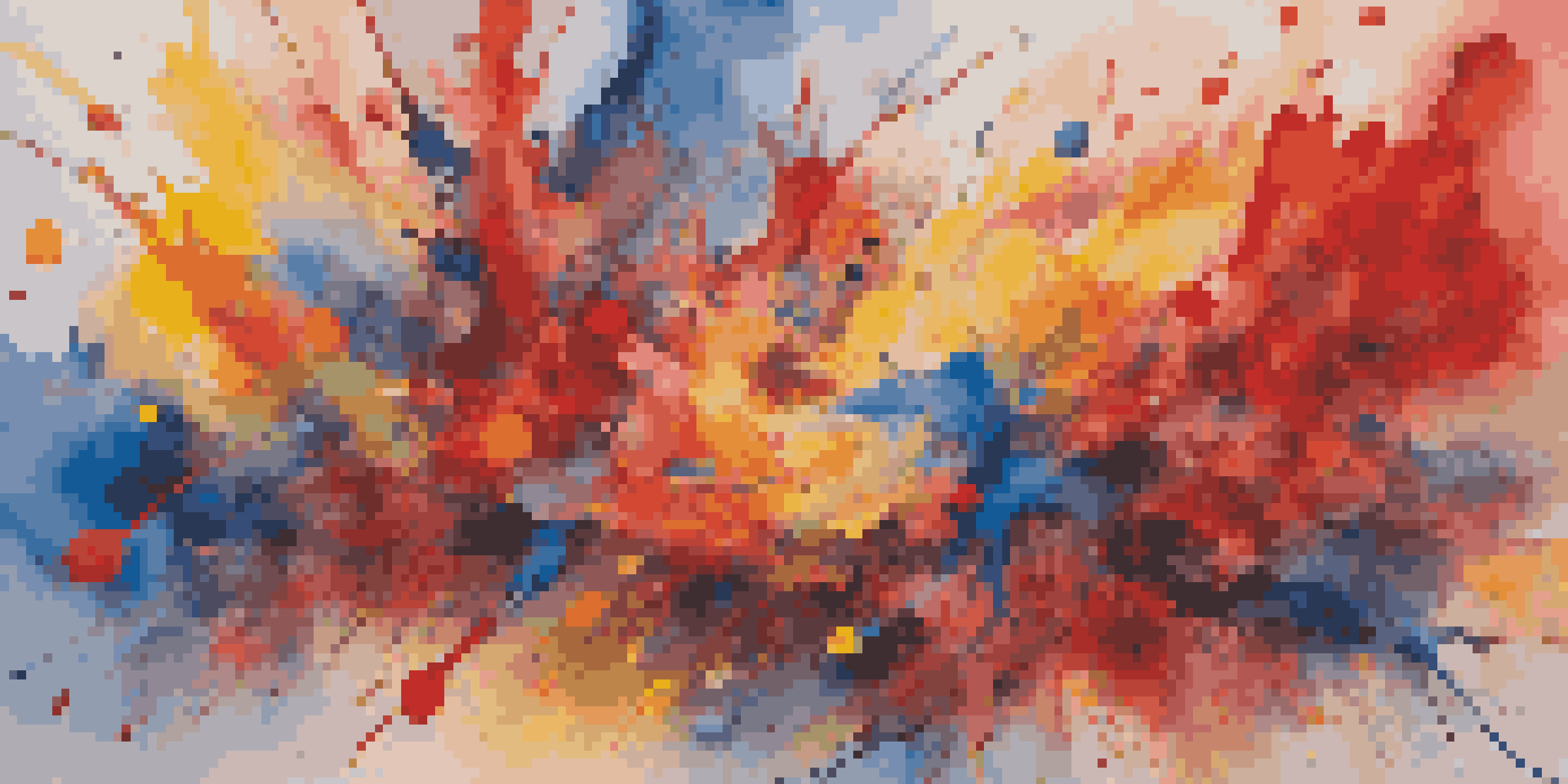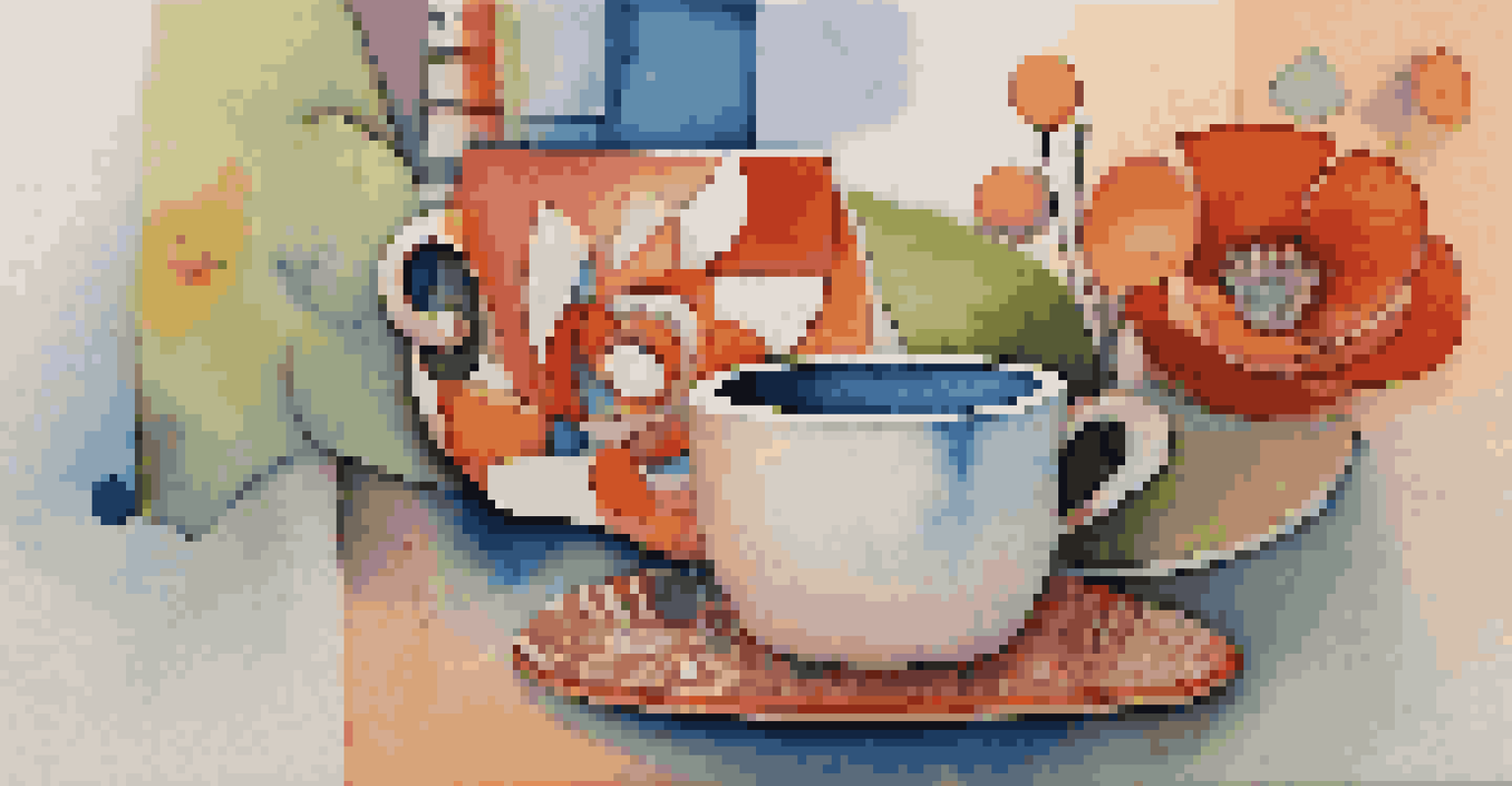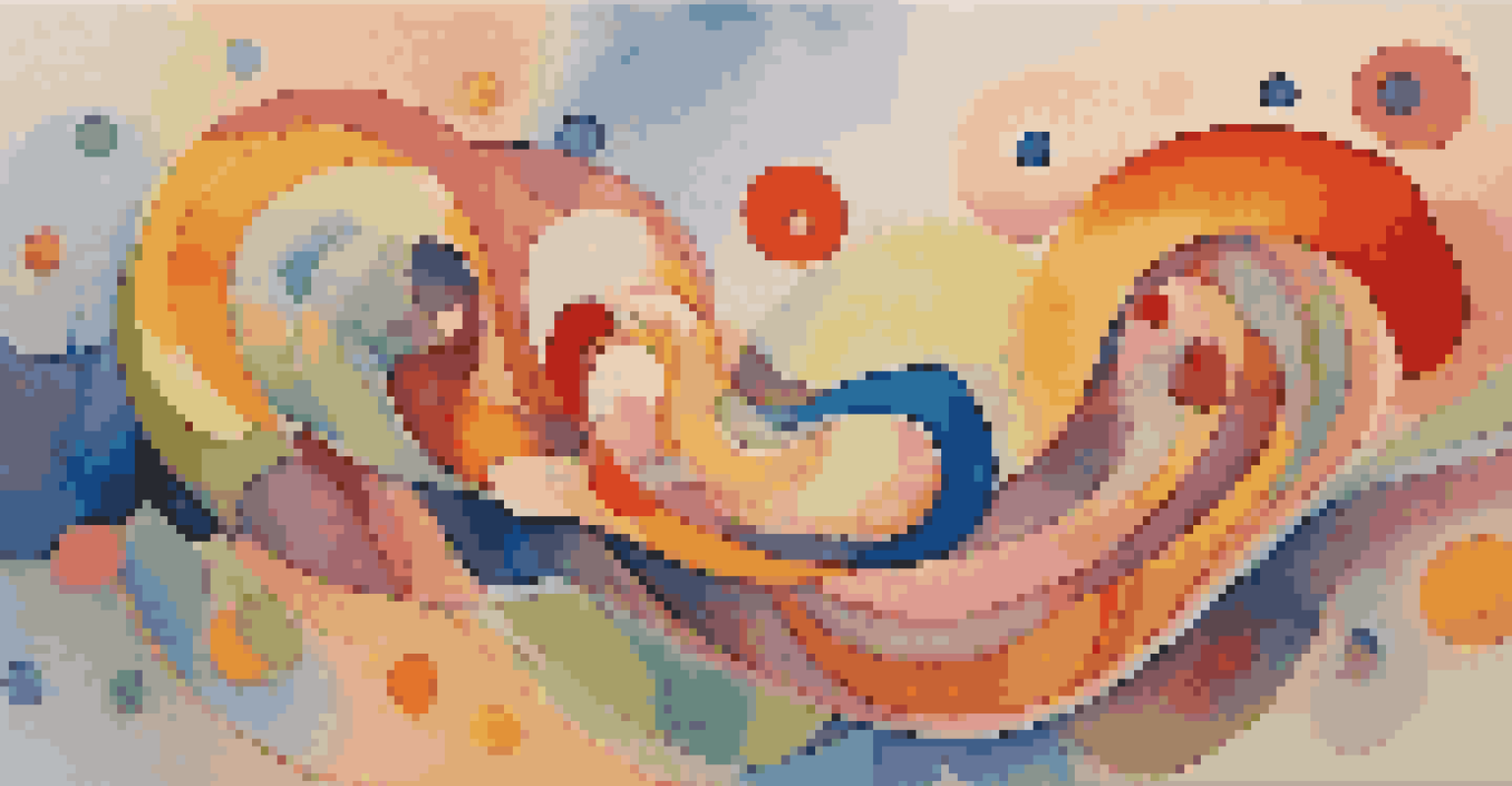The Relationship Between Humor and Abstract Art

Understanding the Basics of Abstract Art
Abstract art breaks away from traditional representation, focusing instead on colors, shapes, and forms. It invites viewers to interpret meaning based on their own experiences and emotions. This fluidity can sometimes evoke a sense of humor, as interpretations vary widely among individuals, leading to unexpected reactions.
Art is not what you see, but what you make others see.
Art is subjective, and abstract pieces often allow for playful interpretations. This is where humor can sneak in, as people might see something funny or absurd in a piece that others find profound. For instance, a chaotic splash of paint might resemble a spilled cup of coffee to one viewer, prompting a chuckle.
Ultimately, abstract art encourages personal connections and responses, making humor a natural companion. The freedom to interpret art can lead to unexpected laughter, showing just how interconnected our emotions can be with visual experiences.
The Role of Humor in Art Interpretation
Humor plays a critical role in how we perceive art, including abstract forms. When people engage with art that makes them laugh, it often creates a more relaxed atmosphere for interpretation. This can open up new avenues of understanding and appreciation, transforming the viewer's experience.

For example, a viewer might find themselves laughing at a piece that features distorted shapes and vibrant colors, allowing them to forget any preconceived notions about 'serious' art. This light-hearted approach can lead to deeper insights and a more personal connection with the artwork.
Humor Enhances Art Interpretation
Incorporating humor into abstract art allows for more relaxed and personal interpretations, enriching the viewer's experience.
By infusing humor into the art-viewing experience, we not only enhance our enjoyment but also encourage open-mindedness. This can lead to a richer dialogue about the intentions behind the art and the diverse meanings it can convey.
Cultural Context and Humor in Abstract Art
Cultural context plays a significant role in how humor is perceived in abstract art. Different cultures have unique senses of humor, which can influence how they respond to particular artworks. For instance, a piece that evokes laughter in one culture might be met with confusion in another.
The greatest respect an artist can pay to music is to be deaf to it.
This diversity highlights the importance of cultural background in interpreting art. Artists often draw on their cultural experiences, embedding humor in their work that resonates with specific audiences. Understanding this context can deepen our appreciation of both the humor and the art itself.
As globalization continues to connect different cultures, the interplay between humor and abstract art becomes even more fascinating. Viewers from various backgrounds can engage with the same artwork, bringing their unique interpretations and humor to the experience.
Examples of Humor in Abstract Art
Several well-known abstract artists have incorporated humor into their work, often using irony or satire. Take, for example, the playful use of color and form in the works of Joan Miró, who often combined whimsical elements with abstract shapes. His art can evoke smiles and laughter, drawing viewers into a joyful interpretation.
Another example is the work of Robert Rauschenberg, whose 'Combines' often blend found objects with abstract painting. The juxtaposition of everyday items can spark humor, as viewers recognize familiar objects in unexpected contexts. This not only entertains but also provokes thought about the nature of art itself.
Cultural Context Shapes Humor
Different cultural backgrounds influence how humor is perceived in abstract art, affecting viewer responses and interpretations.
These examples illustrate that humor doesn't detract from the seriousness of abstract art; instead, it adds layers of meaning. By intertwining humor with abstraction, artists create a dialogue that invites viewers to explore their emotions and thoughts.
The Impact of Humor on Viewer Engagement
Humor can significantly enhance viewer engagement with abstract art. When people find something funny, they're more likely to remember it and share their experiences with others. This word-of-mouth can help foster a deeper interest in both the artwork and the artist.
Additionally, humorous interpretations can lead to discussions and debates, encouraging audiences to think critically about the art. This engagement is vital in a world where art can sometimes feel intimidating or inaccessible. By breaking down barriers with humor, artists invite everyone to join the conversation.
Ultimately, humor can be a powerful tool in making abstract art more approachable. It transforms the viewing experience from a solitary act into a shared journey, where laughter can bridge gaps and foster connections.
Challenges of Humor in Abstract Art
While humor can enhance the appreciation of abstract art, it can also pose challenges. Not everyone responds to humor in the same way, leading to potential misunderstandings. A work intended to be humorous might be perceived as trivial or unworthy by some, which can create a divide among viewers.
Furthermore, abstract art often relies on emotional depth, and humor may not always align with the artist's intentions. This can lead to contention about whether a piece is 'serious' art or merely a joke. Artists must navigate this delicate balance, ensuring their message resonates while inviting laughter.
Challenges of Humor in Art
While humor can engage audiences, it may also lead to misunderstandings about the artist's intentions and the piece's seriousness.
These challenges underscore the complexity of humor as a tool in art. While it has the power to engage and entertain, it also requires sensitivity to diverse interpretations and emotional responses.
The Future of Humor in Abstract Art
As we look to the future, the relationship between humor and abstract art is likely to evolve. With the rise of social media and digital platforms, artists can share their work and humorous interpretations far and wide. This accessibility creates new opportunities for engagement and dialogue.
Moreover, as more artists experiment with humor, we may see a shift in how abstract art is perceived overall. Humorous elements could become a defining characteristic of future movements, challenging traditional notions of seriousness in art. This evolution may democratize art, making it more relatable and enjoyable for a broader audience.

In this changing landscape, humor will continue to play a vital role in shaping the experiences of both artists and viewers. By embracing humor in abstract art, we can foster a culture that values creativity, connection, and joy.